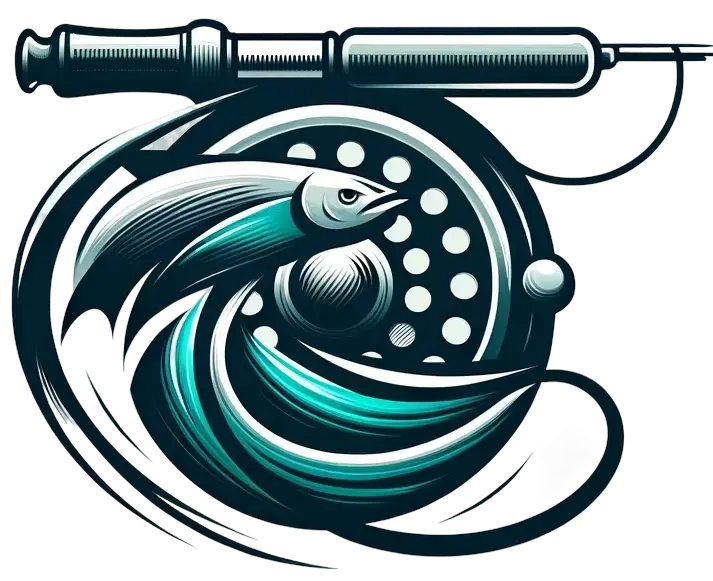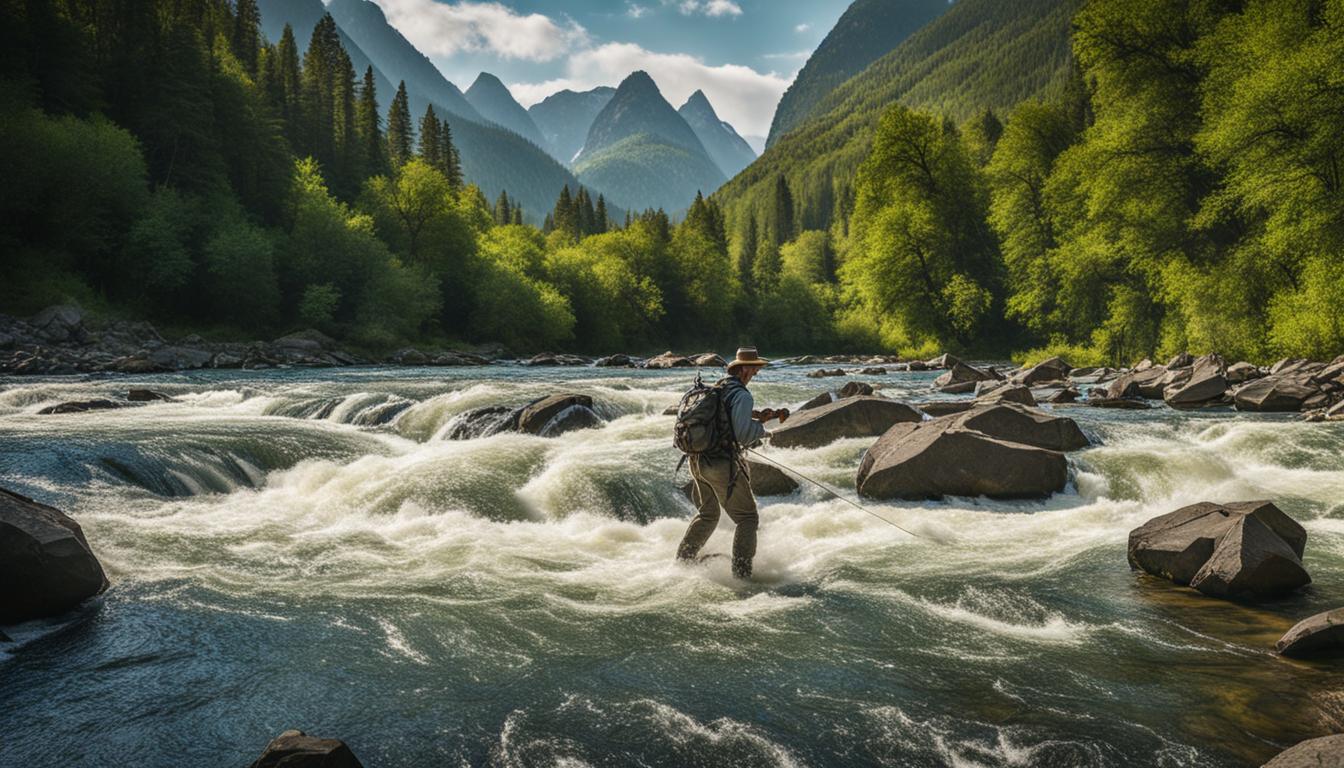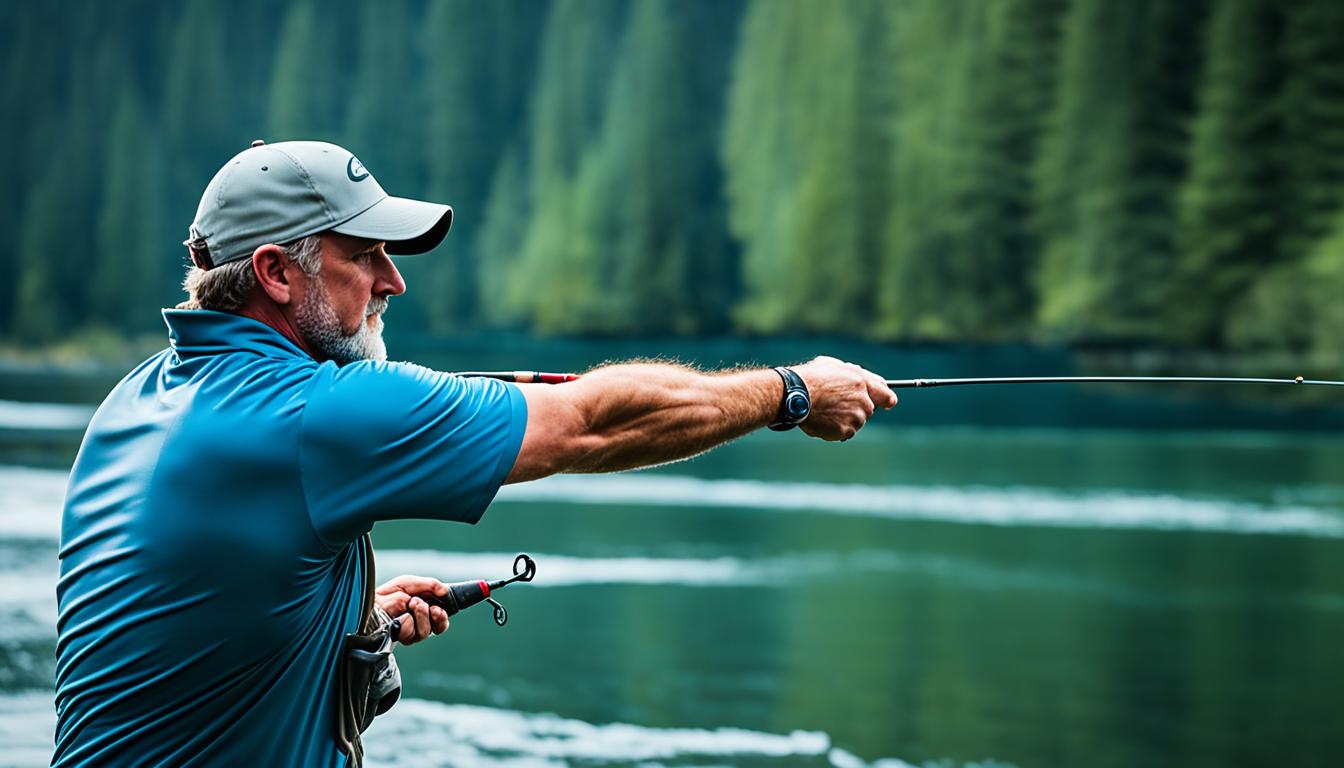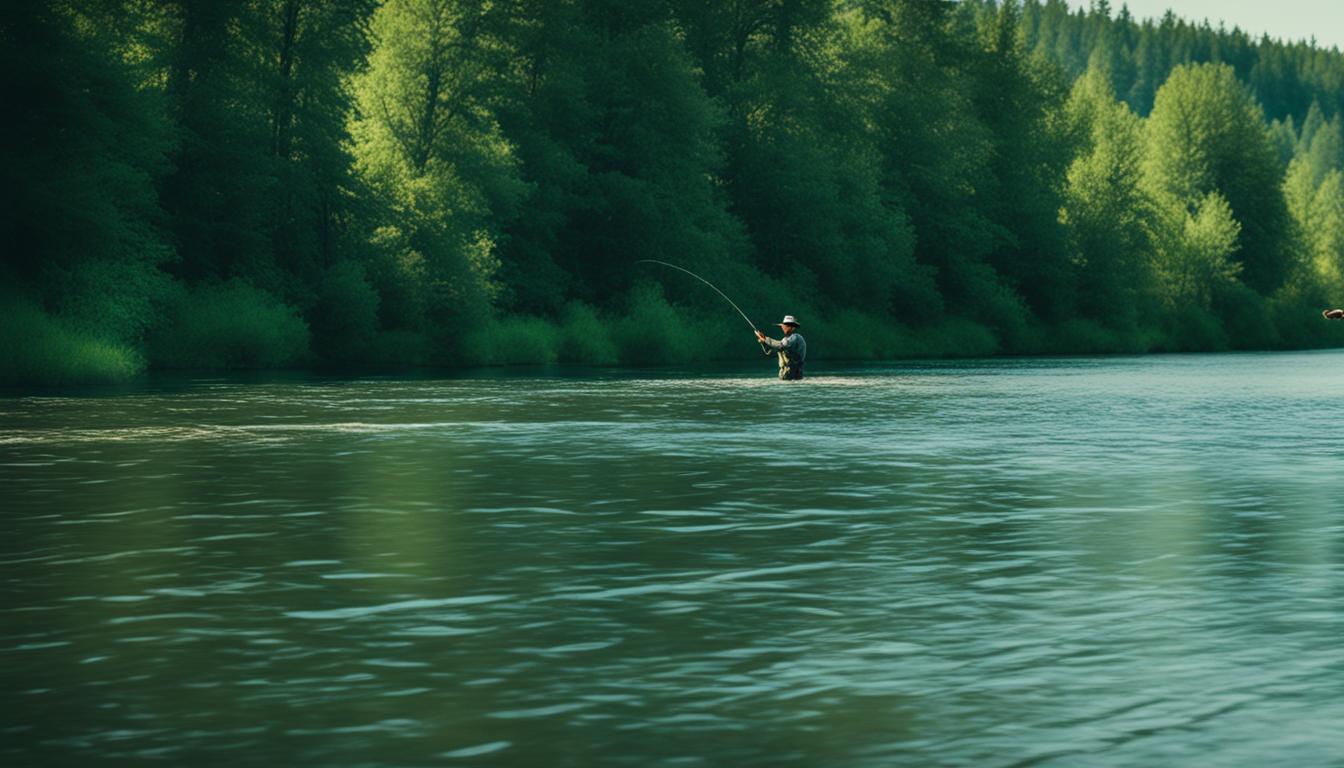Fly fishing in fast water can be a thrilling and challenging experience for anglers. The rush of the current, the anticipation of a strike, and the satisfaction of landing a fish make it an exhilarating pursuit. However, fast water fly fishing also presents its own set of challenges. The swift currents, limited visibility, and elusive nature of fish in these conditions require anglers to adapt their techniques and strategies.
In this article, we will provide you with valuable tips and insights to help you master the art of fly fishing in fast water. Whether you are a beginner looking to learn the basics or an experienced angler seeking to improve your skills, these tips will enhance your chances of success.
Key Takeaways:
- Fly fishing in fast water offers a thrilling and challenging experience.
- Swift currents, limited visibility, and elusive fish require anglers to adapt their techniques.
- Understanding the conditions and monitoring river levels is essential for planning successful fishing trips.
- Targeting sheltered areas along the riverbank increases your chances of finding active fish.
- Using weighted flies and sinking lines helps you reach deeper water where trout are holding.
Are you ready to take your fly fishing skills to the next level? Let’s dive into the tips and strategies that will help you master the art of fly fishing in fast water.
Understanding the Conditions
Before heading out to fish in fast water, it’s important to understand the conditions. High water levels can be caused by various factors such as heavy rainfall, snowmelt, or dam releases. Monitoring the river levels and staying informed about the weather forecasts in your area will provide valuable insights into the current water conditions.
When it comes to understanding high water conditions, there are a few key factors to consider:
- Rainfall: Heavy rainfall can quickly increase water levels, leading to fast-flowing rivers. Monitoring local weather forecasts will give you an idea of whether rainfall is expected in the coming days.
- Snowmelt: In spring or early summer, snowmelt from the mountains can cause rivers to rise rapidly. Pay attention to snowpack levels and the timing of the melt to anticipate changes in water levels.
- Dam Releases: Dams and reservoirs can release water for various reasons, including flood control or hydroelectric power generation. Keep an eye on any scheduled releases that may affect the river you plan to fish.
By monitoring river levels and understanding the contributing factors, you can plan your fishing trips more effectively. Knowing when the water is likely to be high or rising allows you to adjust your fishing strategy and target areas that are more suitable for fast water fly fishing.
Monitoring River Levels
Monitoring river levels is crucial for understanding water conditions. There are several ways to do this:
- Government Websites: Many government agencies provide real-time river level data on their websites. Check with your local Department of Natural Resources or environmental agency for the relevant information in your area.
- Online River Gauges: Certain websites offer online river gauges that track water levels at specific locations along rivers. These gauges provide up-to-date information that you can use to gauge the water conditions.
- Local Fishing Reports: Local fishing forums or fishing guide services often share valuable information about river levels and conditions. These sources may provide firsthand reports from anglers who have recently fished the same river.
By regularly monitoring river levels and staying informed, you can plan your fishing trips strategically. Fishing in fast water conditions requires different techniques and approaches, and having a good understanding of the conditions will give you an advantage on the water.
When planning your fishing trips, consider the following:
Choose days when the water levels are stable or dropping, as this will increase your chances of finding fish and present safer wading conditions.
| Factors to Consider | Benefits |
|---|---|
| Stable or dropping water levels |
– Easier navigation in the river – Increased visibility for fish spotting – More predictable fish behavior |
| Safe wading conditions |
– Reduced risk of accidents – Enhanced fishing experience – Greater focus on fly presentation |
Understanding the conditions is the foundation for successful fast water fly fishing. By staying informed, monitoring river levels, and planning your fishing trips accordingly, you can optimize your chances of a memorable and rewarding fishing experience.
Targeting Sheltered Areas
In fast water conditions, trout seek refuge from strong currents in calm, sheltered areas along the riverbank. These sheltered areas act as riverbank refuges, providing trout with protection and easy access to food. As anglers, targeting these sheltered areas is essential to increase our chances of finding active fish.
When exploring fast water, keep an eye out for pockets of slack water. These pockets are small areas where the river’s flow slows down or even reverses momentarily, providing trout with a respite from the relentless current. Pockets of slack water can be found behind large rocks, fallen trees, or along the edges of riffles and seams.
One effective technique for identifying these prime spots for anglers is to carefully observe the water’s surface. Look for subtle disturbances or calmer patches amidst the fast-flowing water. These areas often indicate pockets of slack water where trout are likely to congregate.
Now, let’s take a closer look at the riverbank refuge and prime spots for anglers in fast water environments:
| Sheltered Areas | Description |
|---|---|
| Pockets of Slack Water | Small areas where the river’s flow slows down or reverses momentarily. |
| Behind Rocks | Rock formations create currents and eddies that provide shelter for trout along the riverbank. |
| Fallen Trees | Trout often seek refuge behind fallen trees, where the branches break the current and create pockets of calm water. |
| Riffles and Seams | The edges of riffles and seams, where fast water meets slower currents, offer trout a place to rest and feed. |
By focusing on these sheltered areas in fast water, we can increase our chances of finding active fish and have a more productive fishing experience. Now that we know the importance of targeting these prime spots for anglers, let’s explore strategies to effectively present our flies in fast water conditions.

Using Weighted Flies and Sinking Lines
When it comes to fly fishing in fast water, one of the key challenges is getting your flies down to the fish quickly. This is where the use of weighted flies and sinking lines comes into play. By employing these fly fishing techniques, you can reach deeper water where trout are often holding, increasing your chances of success.
Weighted nymphs, streamers, and wet flies are excellent choices for targeting fish in fast water. The added weight helps the flies sink quickly, allowing you to reach fish that may be holding in deeper pockets. These weighted flies can imitate natural prey and entice strikes from trout.
In addition to weighted flies, using sinking lines or sink-tip lines can be highly effective in reaching the desired depth. These lines are designed to sink faster and stay below the surface, enabling you to get your flies down to where the fish are feeding. By using sinking lines, you can present your flies in the strike zone for a longer period, maximizing your chances of a successful catch.
When selecting sinking lines, consider the sink rate that matches the water depth you are fishing. Different sink rates are available, ranging from slow sinking to fast sinking. Choosing the appropriate sink rate will allow you to adjust your presentation according to the depth of the water you are fishing.
Remember, when using weighted flies and sinking lines, it’s crucial to choose flies and lines that are suitable for the specific conditions and target species. Experiment with different fly patterns, weights, and line densities to find the combination that works best for you.
By using weighted flies and sinking lines, you can effectively reach deeper water, getting your flies down quickly in fast water conditions. This increases your chances of enticing strikes from trout holding in the depths. Combined with other fly fishing techniques such as targeting sheltered areas, you can improve your success rate and have a rewarding fly fishing experience.
Adapting Your Presentation and Prioritizing Safety
In fast water conditions, trout may be less selective about their food sources and more focused on conserving energy. Adapting your presentation by experimenting with different retrieves and drifts can mimic the behavior of injured or dislodged prey, increasing the chances of triggering strikes from even the most wary trout.
When fly fishing in fast water, it is crucial to prioritize safety. Fast-moving currents, submerged obstacles, and unstable footing can present hazards to anglers wading in high water. To ensure an enjoyable and safe fishing experience, it is important to adhere to river safety precautions:
- Wear appropriate gear, including a properly fitted life jacket or floatation device.
- Always use a wading staff for stability and balance on slippery surfaces.
- Be aware of your surroundings and watch for potential hazards such as fallen trees or debris.
- Never wade in water that exceeds your abilities. It’s better to err on the side of caution.
- If possible, fish with a buddy. Having someone nearby can provide assistance in case of an emergency.
By following these river safety precautions, you can mitigate the risks associated with fast water fishing and enjoy your time on the river with peace of mind.
Remember, safety should always be a top priority when venturing into fast water. It’s better to take extra precautions than to put yourself at risk. Stay informed, be prepared, and fish responsibly.
Fly Presentation Tips
When presenting your fly in fast water, it’s important to consider the following techniques:
- Mend your line: By mending your line upstream or downstream, you can modify the drift of your fly, allowing it to appear more natural.
- Vary your retrieve: Experiment with different speeds and pauses in your retrieve to imitate the behavior of prey in fast-flowing water.
- Use a reach cast: A reach cast can help you place your fly in tight spots and avoid drag, ensuring a more natural presentation.
- Consider using heavier flies: Weighted flies can help you get your fly to the desired depth quickly, increasing your chances of attracting fish.
- Pay attention to drift: In fast water, ensuring a drag-free drift is essential to imitating the movement of insects and enticing strikes.
By adapting your presentation and employing these fly fishing techniques, you can increase your success rate in fast water fishing and make the most of your time on the water.
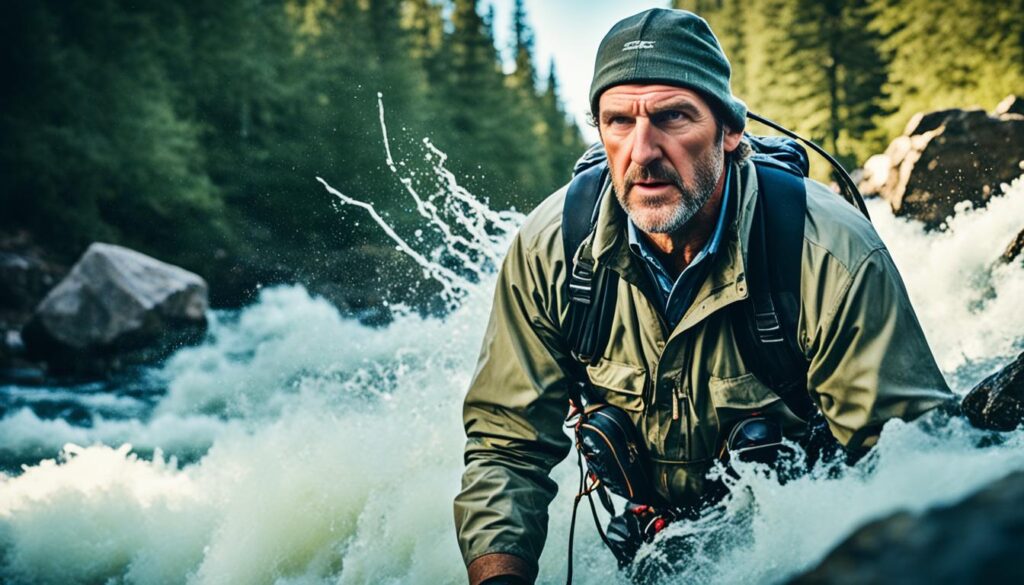
Conclusion
Fly fishing in fast water can be both a challenge and an incredibly rewarding experience. By employing the right strategies and techniques, you can increase your chances of success and master the art of fly fishing in fast water. Understanding the conditions is crucial, as it allows you to plan your fishing trips effectively and make the most out of high water levels. Targeting sheltered areas along the riverbank, where trout seek refuge, can significantly improve your chances of finding active fish.
Using weighted flies and sinking lines enables you to reach deeper water quickly, ensuring your flies are in the strike zone. Adapting your presentation by experimenting with different retrieves and drifts can entice even the most cautious trout. It is important to prioritize safety when fly fishing in fast water, as it can present potential hazards. Taking precautions such as wearing appropriate gear, using a wading staff, and exercising caution will ensure a safe and enjoyable fishing experience.
With practice, persistence, and the implementation of these fast water fly fishing strategies, you can master the art of fly fishing in fast water and create unforgettable memories on the water. So go out there, put these techniques to the test, and may each fishing trip be filled with action, adventure, and memorable experiences. Happy fishing!
FAQ
What are some tips for fly fishing in fast water?
To improve your success in fast water fly fishing, there are a few key tips to keep in mind. Understanding the conditions, targeting sheltered areas, using weighted flies and sinking lines, adapting your presentation, and prioritizing safety are all important strategies to consider.
What are the challenges of fly fishing in fast water?
Fly fishing in fast water can be challenging due to the strong currents and unpredictable conditions. Anglers may face difficulties in reaching the desired depth, presenting the flies naturally, and navigating the fast-moving currents. However, with the right techniques and strategies, these challenges can be overcome.
What are the best flies for fast water fishing?
When fly fishing in fast water, weighted nymphs, streamers, and wet flies are effective choices as they can sink quickly to the desired depth. These flies mimic natural prey and are more likely to attract fish in fast water conditions.
How can I adapt my presentation for fast water fly fishing?
Adapting your presentation in fast water involves experimenting with different retrieves and drifts to mimic injured or dislodged prey. By imitating the behavior of vulnerable prey, you can increase your chances of enticing strikes from fish in fast water conditions.
What should I prioritize for safety when fly fishing in fast water?
Safety is paramount when fly fishing in fast water. It is important to wear appropriate gear, including waders and a wading staff, to ensure stability and balance. Important safety precautions include being aware of fast-moving currents, submerged obstacles, and maintaining caution while wading.
